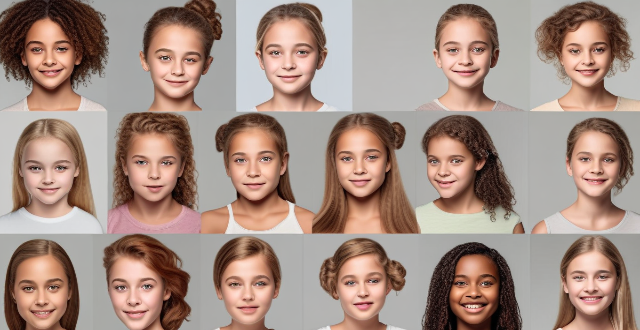Young girls face numerous challenges in terms of self-esteem and body image, largely due to societal pressures and media influence. These challenges include unrealistic beauty standards promoted by the media, constant comparison to peers on social platforms, bullying related to appearance, pressure to conform, lack of positive role models, and early sexualization. Addressing these issues requires a multifaceted approach involving families, schools, communities, and policymakers to create an inclusive and supportive environment that promotes body positivity, individuality, and acceptance of diversity.

Challenges Faced by Young Girls in Terms of Self-Esteem and Body Image
Societal Pressure and Media Influence
One of the primary challenges young girls face is the immense pressure from societal norms and media influence. The constant bombardment of unrealistic beauty standards through advertisements, social media, and celebrity culture can lead to a distorted perception of what is considered "ideal."
- Solution: Encourage critical thinking about media messages and promote body positivity. Parents and educators should discuss the concept of photoshopping and airbrushing, helping girls understand that these images are not a true representation of reality.
Comparison to Peers
Another challenge is the tendency to compare oneself to peers. With the rise of social media platforms like Instagram and Snapchat, it's easier than ever for young girls to compare their bodies and lives to those of their friends and influencers.
- Solution: Foster an environment where individuality is celebrated. Encourage girls to focus on their unique talents and qualities rather than physical appearance. Schools can implement programs that emphasize self-improvement over comparison.
Bullying and Teasing
Bullying related to appearance can have a devastating effect on self-esteem. Whether it's in person or online, teasing about weight, clothing, or any aspect of physical appearance can deeply impact how a girl feels about herself.
- Solution: Implement strict anti-bullying policies in schools and create safe spaces where girls can report incidents without fear of retribution. Additionally, teach empathy and the importance of kindness in all interactions.
Pressure to Conform
The desire to fit in can lead to unhealthy behaviors such as dieting or wearing uncomfortable clothing to meet certain beauty standards. This pressure often stems from wanting to be accepted by peers.
- Solution: Promote a culture of acceptance and diversity. Schools and communities should celebrate different body types, ethnicities, and styles, showing that beauty comes in many forms.
Lack of Positive Role Models
Often, the role models presented to young girls are unattainable or promote harmful lifestyles. The absence of positive, relatable role models can leave girls feeling lost and unsure of how to develop a healthy self-image.
- Solution: Introduce and highlight real-world role models who exhibit strength, intelligence, and compassion. These figures should represent a variety of backgrounds and body types, providing tangible examples of successful women who defy conventional beauty standards.
Early Sexualization
The sexualization of young girls through clothing designed for adults, makeup targeted at children, and suggestive advertisements can complicate the formation of a healthy body image.
- Solution: Advocate for age-appropriate marketing and product design. Educate parents on the importance of monitoring their child's exposure to adult content and encourage them to select toys and clothing that are appropriate for their child's age and promote creativity and imagination.
Addressing These Challenges
To address these challenges effectively, it requires a multifaceted approach involving families, schools, communities, and policymakers. By working together to create a more inclusive and supportive environment, we can help young girls develop a strong sense of self-esteem and a positive body image.